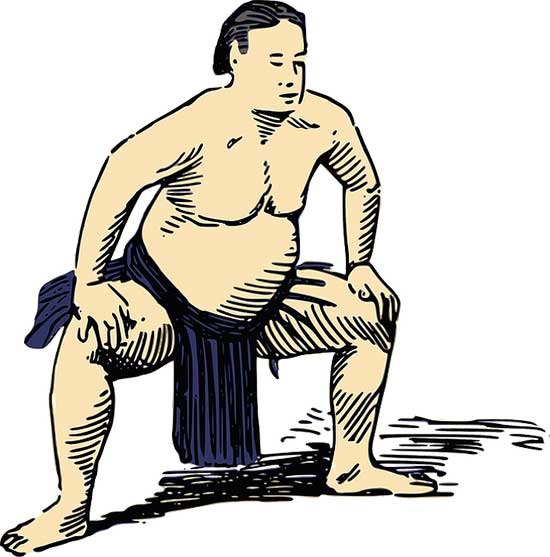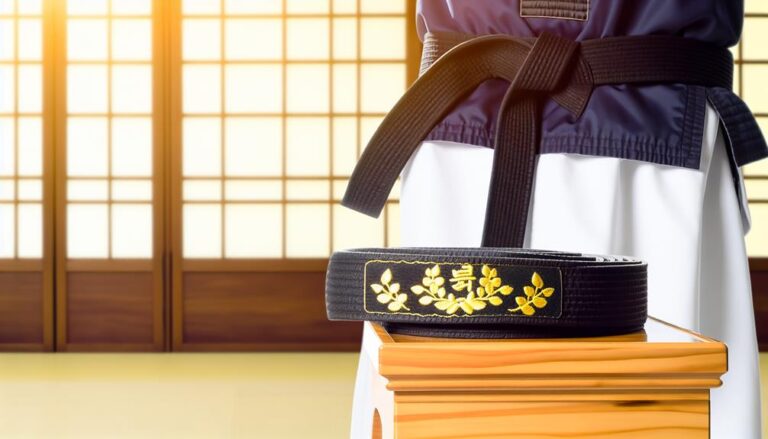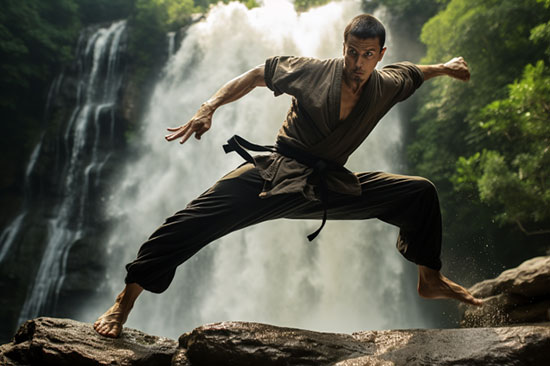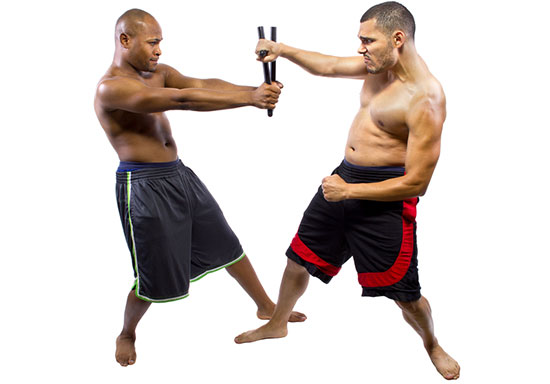Taekwondo and ninjutsu are two distinct martial arts styles with their own techniques, training methods, and philosophies. Taekwondo is a Korean martial art that focuses on high and fast kicks, while ninjutsu is a Japanese martial art associated with stealth techniques and unconventional warfare. In the US, both taekwondo and ninjutsu have a significant presence, attracting practitioners who are interested in different aspects of martial arts.
Key Takeaways:
- Taekwondo and ninjutsu are two distinct martial arts styles.
- Taekwondo emphasizes high and fast kicks, while ninjutsu focuses on stealth techniques.
- Both taekwondo and ninjutsu have a significant presence in the US.
- Practitioners choose taekwondo or ninjutsu based on their interests and goals.
- Exploring taekwondo and ninjutsu offers a rewarding and challenging journey in the world of martial arts.
Contents
Origins and Characteristics of Taekwondo and Ninjutsu
Taekwondo and ninjutsu are two distinct martial arts styles, each with its own unique origins, techniques, and characteristics. Understanding the origins of these martial arts can provide valuable insight into their development and purpose.
The Origins of Taekwondo
Taekwondo originated in Korea during the 1940s and 1950s. It was heavily influenced by traditional Korean martial arts, such as Taekkyon and Subak. The Korean military also played a significant role in the development of taekwondo, as it sought to create a martial art that emphasized physical fitness, self-defense, and discipline.
The characteristics of taekwondo revolve around its dynamic and powerful kicks. Practitioners of taekwondo are known for their high, fast, and acrobatic kicks, which require agility and flexibility. Taekwondo is not limited to kicks, however, as it also incorporates punches, blocks, and forms (patterns) into its training regime.
The Origins of Ninjutsu
Ninjutsu, on the other hand, traces its roots back to ancient Japan. It was developed by ninjas as a covert martial art, primarily focused on espionage, stealth techniques, and unconventional warfare. Ninjas were skilled in infiltration, sabotage, and guerrilla tactics, making ninjutsu a highly secretive and specialized martial art.
The characteristics of ninjutsu revolve around its emphasis on stealth, agility, and unconventional combat skills. Practitioners of ninjutsu are trained in various stealth techniques, such as camouflage, disguise, and stealthy movement. They also specialize in using a wide range of weapons, including shurikens, swords, and other tools suitable for covert operations.
| Martial Art | Origins | Characteristics |
|---|---|---|
| Taekwondo | Korea, 1940s-1950s | Dynamic kicks, punches, forms |
| Ninjutsu | Ancient Japan | Stealth techniques, unconventional combat |
Understanding the origins and characteristics of taekwondo and ninjutsu provides a foundation for appreciating the diversity and uniqueness of these martial arts. While taekwondo focuses on dynamic kicks and forms, ninjutsu emphasizes stealth and unconventional combat. Whether one seeks the agility and precision of taekwondo or the secretive tactics of ninjutsu, both martial arts offer distinct paths to explore the world of self-defense and personal development.
Training and Techniques in Taekwondo and Ninjutsu
Training in taekwondo focuses on developing physical strength, flexibility, and speed. It begins with mastering the fundamental stances, kicks, and punches, gradually progressing to more advanced techniques. Practitioners of taekwondo also learn a series of forms, known as poomsae or patterns, which are choreographed sequences of movements. These forms help to develop discipline, balance, and precision in executing techniques.
Table: Key Training Elements in Taekwondo
| Training Element | Description |
|---|---|
| Stances | Basic positions that provide a solid foundation for executing kicks and punches. |
| Kicks | A wide range of kicks, including front kicks, side kicks, roundhouse kicks, and back kicks. |
| Punches | Basic punching techniques such as jabs, crosses, and hooks. |
| Forms (Poomsae) | Sequences of movements practiced solo to develop technique, balance, and discipline. |
In contrast, ninjutsu training focuses on developing stealth, agility, and unconventional combat skills. It involves learning various stealth techniques, such as walking silently and blending into the environment. Ninjutsu practitioners also train in a wide range of weapons, including shuriken (throwing stars), katana (samurai sword), and kunai (a type of knife). The emphasis on stealth and unconventional warfare tactics sets ninjutsu apart from other martial arts styles.
Table: Key Training Elements in Ninjutsu
| Training Element | Description |
|---|---|
| Stealth Techniques | Methods for moving silently, blending into the environment, and avoiding detection. |
| Weapons Training | Learning to use a variety of traditional Japanese weapons, including shuriken, katana, and kunai. |
| Unconventional Combat Skills | Strategies for unconventional warfare, including sabotage, espionage, and guerrilla warfare tactics. |
Both taekwondo and ninjutsu offer unique training methods and techniques that cater to different goals and interests. Whether you are drawn to the dynamic kicks and disciplined forms of taekwondo or the stealthy tactics and unconventional combat skills of ninjutsu, both martial arts provide a challenging and rewarding journey for practitioners seeking to explore the world of martial arts.
Comparing Combat Styles in Taekwondo and Ninjutsu
Taekwondo and ninjutsu are two martial arts styles that differ significantly in their combat approaches. Taekwondo is known for its high and fast kicks, showcasing the practitioner’s agility, speed, and precision. The arsenal of taekwondo kicks includes front kicks, side kicks, back kicks, roundhouse kicks, and jump kicks. These powerful kicks are delivered with technique and force, allowing practitioners to strike their opponents from various angles and heights. Taekwondo focuses on generating explosive power through the legs to execute devastating kicks, making it a dynamic and visually impressive combat style.
Ninjutsu, on the other hand, emphasizes stealth techniques and unconventional warfare tactics. While taekwondo showcases its techniques in a more overt and direct manner, ninjutsu practitioners utilize stealth and deception to gain the upper hand in combat. The training in ninjutsu involves learning how to move silently, blend into the surroundings, and employ surprise attacks. Ninjutsu also utilizes a variety of weapons, such as shurikens (throwing stars), kunai (daggers), and swords, enhancing the effectiveness of its stealthy approach. By focusing on stealth techniques and the element of surprise, ninjutsu offers a unique and strategic combat style.
Both taekwondo and ninjutsu have their own strengths and applications in combat. Taekwondo’s emphasis on high and fast kicks allows practitioners to deliver powerful strikes with speed and accuracy. On the other hand, ninjutsu’s stealth techniques and unconventional warfare tactics offer a more covert and strategic approach to combat. The choice between these two martial arts styles ultimately depends on individual preferences and goals. Whether one seeks to showcase impressive kicks or prefers a stealthy approach to combat, both taekwondo and ninjutsu offer distinct and engaging combat styles to explore.

Conclusion
In summary, when comparing taekwondo and ninjutsu, it becomes evident that these two martial arts styles have distinct characteristics and training methods. Taekwondo emphasizes high and fast kicks, focusing on agility and precision. On the other hand, ninjutsu places a strong emphasis on stealth techniques and unconventional combat strategies.
Both taekwondo and ninjutsu offer unique opportunities for practitioners to explore and develop their skills. Taekwondo provides a dynamic and explosive approach to martial arts, allowing individuals to enhance their physical strength, flexibility, and speed. Meanwhile, ninjutsu focuses on the art of stealth and offers a different form of combat training, incorporating various weapons and espionage techniques.
Whether you are captivated by the powerful kicks of taekwondo or intrigued by the secretive nature of ninjutsu, both martial arts present exciting paths for individuals seeking personal growth, discipline, and a deeper understanding of martial arts.





